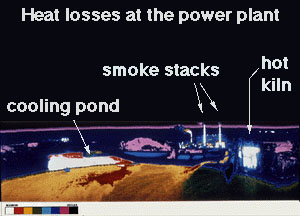ExploraTour - Looking at the World in a Different Light
Click on image for full size
NASA / Smithsonian Astrophysical Observatory
The awesome power of a giant black hole was revealed by looking at this galaxy in three different types of light. The picture that you see is of Centaurus A, a very peculiar galaxy.
A galaxy is just a large group of stars that are moving together through space. Centaurus A is different because something violent is happening there. At the center of Centaurus A, scientists believe there is a very large black hole.
When stars quit burning because they use up their fuel, the gas in their outer layers falls inward on top of the gas at the center. This falling gas crushes everything below it. Soon the star has been smashed into a very small object. But this object has such strong gravity that not even light can get away from it. This object is called a black hole because it is totally black -- we cannot see it.
Other stars can fall into the black hole and also be crushed. When this happens, the black hole gets bigger and more powerful.
The black hole at the center of this galaxy is spinning and making a big jet of gas squirt out of the top and bottom. This gas jet is very hot and so it emits x-rays. Electrons moving near the black hole give off radio waves.











